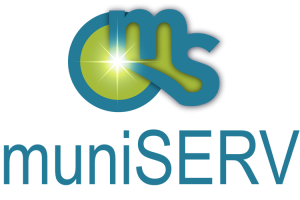October is Mental Health Month. Recently there has been bigger mindfulness of the impact of mental health problems on individuals and the workplace. The economic impact is realized through direct treatment costs to the health care system as well as indirect costs, such as reduced or lost productivity due to absenteeism.
Mental health problems account for about half of employee absences due to illness each year in Canada for example, 3.5 days lost per employee per year are due to mental health problems. It is estimated that mental illness results in 35 million lost workdays each year in Canada.’
Employees living with mental health problems may feel and behave out of character at home and work. There may be feelings of things not quite right, yet they are unable to pinpoint the problem. Their co-workers, supervisors and family members may start to notice a change in mood and behaviour.
Signs that indicate an employee or colleague may have a mental health problem are:
· Regular late arrivals or often absent
· Lack of teamwork or an over-all disinterest in working with co-workers
· Lower output
· Increased mishaps or safety problems
· Numerous complaints of exhaustion or unexplained pains
· Difficulty focusing, not being decisive or forgetting things
· Making apologies for missed deadlines or poor work
· Decreased attention or involvement in one’s work
· Working excessive overtime over a prolonged period
· Expressions of outlandish or grand ideas
· Displays of irritation or pointing the finger at others
It is important to highlight that people behaving in these ways may be just having a bad day or week or dealing with a difficult situation in their personal life that may be temporary. A pattern that continues for a more extended period, however, may point to an underlying mental health problem.
Stress is a consistent part of life and work, and it can be positive or negative. Unwarranted hurtful stress through life events, including workplace issues, can contribute to mental health problems. Work itself can be expected to generate a certain level of stress associated with meeting deadlines and expectations, the need to feel valued and the loss of control over one’s time.
There are many causes of workplace stress. One key to effective stress management is maintaining awareness of the potential stressors and readiness to address them before they become problematic. Some of the most critical sources of work-related stress are listed below.
· Poor communication
· Incongruity in work demands, individual ability and amount of control over working practices
· Work overload and work underload
· Shift work and/or night work
· Segregation, isolation and/or unstructured support for home workers
· Short-term contracts
· Role conflict, uncertainty and changing roles
· The uneven weight assigned by management to consultation, support and control
· Lack of training for managers in communication and people skills
· Idleness
· Uncomfortable physical workspace
· Introduction of new technology, if not planned and gradual
· The culture of presenteeism, in which an employee feels the need to be seen working at all times
· Work-life imbalance
· Home-based stresses that support or feed off of work-based stresses
Managing workplace stress can include training for employees to raise awareness about the causes and effects of stress, as well as to learn skills for coping with stress at work and in their personal lives.
Research has shown that some job stressors are worse than others, such as jobs that continuously involve imposed deadlines over an extended period and give individuals little control over the day-to-day organization of their work (high demand/low control). These jobs can lead to more than double the rate of heart and cardiovascular problems. As well as significantly higher rates of anxiety, depression and fell of being undermined. High demand/low control jobs also lead to substantially higher alcohol, prescription and over-the-counter drug use, and a significantly higher susceptibility to infectious diseases.’
Jobs that require high physical or mental effort but offer little in the way of compensation, status, financial gain or career enhancement (high effort/low reward) also affect employee stress levels. These jobs are associated with triple the rate of cardiovascular problems and significantly higher rates of depression, anxiety and conflict-related problems
The health of workers does not have to be compromised by stress. Changes to the workplace can make for a more mentally healthy workplace, especially when employees feel adequately rewarded and have greater control of their work.
Mental health problems can seriously affect someone’s ability to work. If left untreated and the mental health problem worsens, the employee may need to stop working altogether.
On the other hand, employees may try to continue to work knowing that they are not performing to their usual standards. If mental health problems are acknowledged early, and proper treatment is obtained, most people can quickly return to their regular performance at work, and much unhappiness and suffering can be avoided.
Monika B. Jensen Ph.D
TEL: 905-683-9953
WEBSITE: www.aviarygroup.ca
PRINCIPAL
FAX: 905-683-9912








.jpg)
.png)




